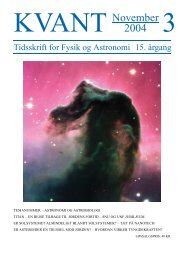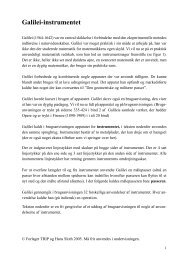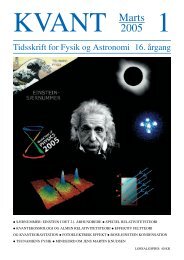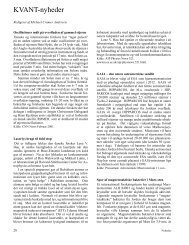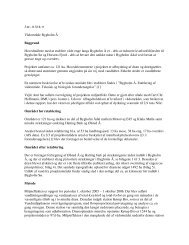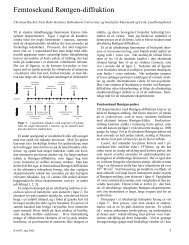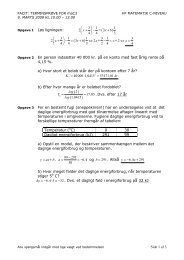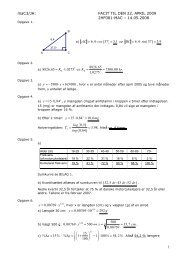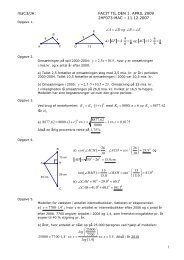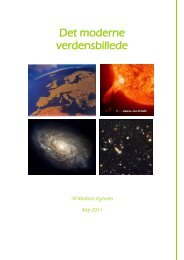Chapter 7 The Outer Planets
Chapter 7 The Outer Planets
Chapter 7 The Outer Planets
Create successful ePaper yourself
Turn your PDF publications into a flip-book with our unique Google optimized e-Paper software.
192 <strong>Chapter</strong> 7 <strong>The</strong> <strong>Outer</strong> <strong>Planets</strong><br />
<strong>The</strong> <strong>Outer</strong> <strong>Planets</strong>: A Comparison<br />
Jupiter<br />
Saturn<br />
Uranus<br />
Neptune<br />
Pluto<br />
Terrestrial core,<br />
liquid metallic<br />
hydrogen shell, liquid<br />
hydrogen mantle<br />
Similar to Jupiter, with<br />
bigger terrestrial core<br />
and less metallic<br />
hydrogen<br />
Terrestrial core,<br />
liquid water shell,<br />
liquid hydrogen<br />
and helium mantle<br />
Similar to Uranus<br />
Unknown<br />
No solid surface,<br />
atmosphere gradually<br />
thickens to liquid state,<br />
belt and zone structure,<br />
hurricanelike features<br />
No solid surface, less<br />
distinct belt and zone<br />
structure than Jupiter<br />
No solid surface, weak<br />
belt and zone system,<br />
hurricanelike features,<br />
color from methane<br />
absorption of red,<br />
orange, yellow<br />
Like Uranus<br />
Apparently rock<br />
and ice<br />
Yes<br />
Yes<br />
Yes<br />
Yes<br />
No<br />
Primarily H, He<br />
Primarily H, He<br />
Primarily H, He,<br />
some CH 4<br />
Primarily H, He,<br />
some CH 4<br />
Unknown<br />
For detailed numerical comparisons between planets, see Appendix Tables A-1 and A-2.<br />
*To see the orientations of these magnetic fields relative to the rotation axes of the planets, see Figure 7-31.<br />
1AU<br />
Interior Surface Rings Atmosphere Magnetic Field<br />
Saturn<br />
Earth<br />
Uranus<br />
4.2AU 4.3AU 9.7AU 10.9AU 9.4AU<br />
19,000 × Earth’s<br />
total field at its<br />
cloud layer,<br />
14 × stronger than<br />
Earth’s surface field<br />
570 × Earth’s total<br />
field at its cloud<br />
layer, 2 ⁄3 × Earth’s<br />
surface field<br />
50 × Earth’s total<br />
field at its cloud<br />
layer, 0.7 × Earth’s<br />
surface field<br />
35 × Earth’s total<br />
field at its cloud<br />
layer, 0.4 × Earth’s<br />
surface field<br />
Unknown<br />
Earth Jupiter Saturn Uranus Neptune Pluto<br />
Sun<br />
(Stephen P. Meszaros/NASA, M. Buie, K. Horne, and D. Tholen)<br />
Neptune<br />
Pluto<br />
Jupiter




